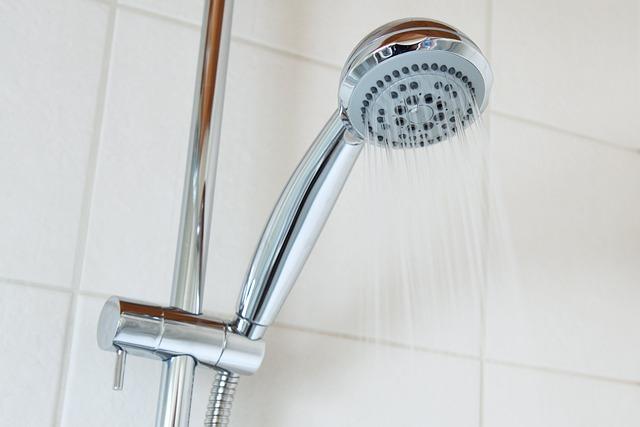Is a Cold Shower the Same as Ice Bath? Decoding Cold Therapy

Are you someone who dreads the shivers that accompany a cold shower? Perhaps you’ve heard the buzz about athletes taking ice baths for their supposed rejuvenating effects. But have you ever wondered if these two cold therapies – the humble cold shower and the intimidating ice bath – are essentially the same thing? Look no further, because in this article, we will be decoding the mysteries of cold therapy and exploring whether a cold shower can hold a candle to the legendary ice bath. So grab a warm drink and get ready to dive into the world of cold therapy, as we separate fact from fiction and uncover the truth behind these chilling experiences.
Contents
- 1. Understanding the Science: How Cold Therapy Affects the Body’s Physiology
- 2. The Differences Unveiled: Comparing the Benefits and Limitations of Cold Showers and Ice Baths
- 3. Maximizing Recovery: Leveraging Cold Therapy for Post-Workout Muscle Repair and Pain Reduction
- 4. Navigating the Intensity: Gradual Cold Exposure Techniques for Optimal Results
- 5. The Mind-Body Connection: Exploring the Psychological Benefits of Cold Therapy
- 6. Safety First: Precautions and Preparations to Consider Before Attempting Cold Showers or Ice Baths
- 7. Incorporating Cold Therapy into Your Wellness Routine: Practical Tips and Techniques
- 8. Unlocking the Potential: How Cold Showers and Ice Baths Can Boost Immune Function
- 9. Enhancing Performance: Cold Therapy’s Potential Impact on Athleticism and Endurance
- 10. Intermittent Cold Exposure: The Rising Trend and Its Potential Health Benefits
1. Understanding the Science: How Cold Therapy Affects the Body’s Physiology
section id="1-understanding-the-science"
When it comes to cold therapy, the question of whether a cold shower is as effective as an ice bath often arises. While both methods involve exposure to cold temperatures, they impact the body in different ways.
A cold shower, as the name suggests, involves taking a shower with cold water. This form of cold therapy primarily affects superficial tissues, such as the skin and muscles near the surface of the body. The cold water constricts blood vessels, reducing blood flow to the area and numbing nerve endings. This can help relieve inflammation, soothe sore muscles, and invigorate the body.
On the other hand, an ice bath entails immersing the body in freezing cold water or adding ice to maintain a low temperature. The extreme coldness not only affects the surface tissues but also penetrates deeper into the body, reaching the internal organs and tissues. Ice baths work by triggering a series of physiological responses, such as vasoconstriction followed by vasodilation, producing a pump-like effect that enhances circulation and accelerates the removal of metabolic waste products.
Overall, while a cold shower offers some benefits for immediate relief and superficial rejuvenation, an ice bath is a more intense and systematic form of cold therapy that provides deeper physiological benefits. Depending on your goals and preferences, either method can be effective in promoting overall well-being.
2. The Differences Unveiled: Comparing the Benefits and Limitations of Cold Showers and Ice Baths
Cold showers and ice baths are two widely popular forms of cold therapy that offer numerous benefits for the mind and body. While both share the common goal of exposing the body to cold temperatures, there are key differences between the two methods that make them distinct experiences.
One of the primary differences lies in the intensity and duration of exposure. Cold showers typically involve a shorter duration of cold exposure, lasting anywhere from 30 seconds to a few minutes. On the other hand, ice baths require a longer period of immersion, ranging from 10 to 20 minutes. This longer exposure time allows for a deeper and more intense cold sensation that can have a greater impact on the body’s response and recovery.
Another important distinction lies in the temperature of the water. Cold showers typically involve water at or below room temperature, ranging anywhere from 50 to 70 degrees Fahrenheit. Ice baths, on the other hand, require water temperatures below freezing, usually around 32 degrees Fahrenheit or lower, and are often supplemented with ice cubes or chilled water to achieve this extreme coldness. This significant contrast in temperature can lead to varying physiological responses and benefits.
When it comes to the benefits, both cold showers and ice baths offer unique advantages. Cold showers can provide a refreshing and invigorating start to the day, while also boosting circulation and increasing alertness. They can also aid in muscle recovery, reduce inflammation, and improve the overall condition of the skin and hair. Ice baths, on the other hand, are commonly used by athletes and fitness enthusiasts to promote faster recovery, as the intense cold can help reduce muscle soreness and inflammation more effectively. They can also enhance immune function and increase the release of endorphins, leading to a sense of euphoria and improved mood.
In summary, although cold showers and ice baths are both forms of cold therapy, they differ in terms of duration, intensity, and temperature. Each method offers unique benefits and limitations, making them suitable for different needs and preferences. Whether you opt for a refreshing cold shower or embrace the chilling experience of an ice bath, both can contribute to your overall well-being and help you unlock the full potential of cold therapy.
3. Maximizing Recovery: Leveraging Cold Therapy for Post-Workout Muscle Repair and Pain Reduction
In the pursuit of optimal recovery after intense workouts, athletes and fitness enthusiasts are turning to cold therapy as a powerful tool. Cold therapy involves exposing the body to colder temperatures to promote muscle repair and reduce post-workout pain. While there are various forms of cold therapy, one common question that arises is whether a cold shower is as effective as an ice bath.
Both cold showers and ice baths offer benefits for recovery, but they differ in terms of intensity and depth of cold exposure. A cold shower typically involves standing under a cold water stream, while an ice bath requires filling a container with water and adding ice to create a much colder temperature.
Here are some key factors to consider when comparing cold showers to ice baths:
-
Temperature: Ice baths are typically colder than cold showers. While a cold shower might provide a refreshing cool-down, immersing your body in ice-cold water for a specific duration allows for greater cold exposure, leading to more significant benefits.
-
Duration: Cold showers are often shorter in duration compared to ice baths. Generally, a cold shower lasts for a few minutes, while ice baths range from 10 to 20 minutes. The longer duration of an ice bath allows for deeper penetration of the cold, enhancing the recovery process.
- Muscle benefits: Both cold showers and ice baths can help reduce inflammation and muscle soreness after a strenuous workout. The cold temperature constricts blood vessels, decreasing swelling and tissue damage. Additionally, the inrush of cold water can stimulate blood circulation, promoting nutrient delivery to muscles for faster repair and recovery.
In conclusion, while cold showers offer some benefits for post-workout recovery, ice baths are more effective due to their lower temperature and longer duration. Incorporating ice baths into your recovery routine can maximize the benefits of cold therapy, enabling you to recover faster, reduce muscle pain, and ultimately perform at your best. Remember to consult with a healthcare professional before starting any new recovery regimen to ensure it is safe and suitable for your individual needs.
In the realm of cold therapy, there are various techniques that offer different benefits for your body and mind. One common question that often arises is whether a cold shower provides the same benefits as an ice bath. Let’s dive into the world of cold exposure and explore the gradual techniques that can yield optimal results.
-
Gradual cold exposure: Cold therapy involves subjecting your body to low temperatures, stimulating a variety of physiological responses. Unlike an ice bath, where you immerse yourself in freezing water for a set duration, a cold shower allows for a more controlled and gradual exposure to cold temperatures. This gradual approach can be beneficial for beginners or those seeking a less intense experience.
-
Temperature control: With a cold shower, you have the ability to adjust the water temperature according to your comfort level. You can start with lukewarm water and gradually decrease the temperature as your body adapts. This flexibility allows you to find the sweet spot that challenges your body without overwhelming it.
- Vascular constriction and cardiovascular benefits: Cold exposure, whether it be through a shower or an ice bath, can cause vasoconstriction, which is the narrowing of blood vessels. This can improve blood circulation and heart health. Additionally, cold therapy may help reduce inflammation, decrease muscle soreness, and increase the production of feel-good endorphins.
So, while a cold shower and an ice bath both offer cold therapy benefits, they provide different experiences and levels of intensity. Ultimately, it’s up to your personal preference and goals. Whether you choose to start with a refreshing cold shower or dive right into the invigorating world of ice baths, listen to your body and enjoy the journey towards optimal results.
5. The Mind-Body Connection: Exploring the Psychological Benefits of Cold Therapy
When it comes to cold therapy, there are various methods that can be used, including cold showers and ice baths. While both involve exposure to cold temperatures, there are some key differences between the two that affect their psychological benefits.
Cold showers are a popular form of cold therapy that involve taking a shower with lower water temperatures than usual. This method is more accessible and easier to incorporate into your daily routine. It can help increase alertness, stimulate blood circulation, and boost mood. Cold showers have been linked to reducing stress and anxiety, improving mental clarity, and even enhancing the immune system.
On the other hand, ice baths involve immersing your body (or specific body parts) in icy water for a specific duration. This method is commonly used by athletes for muscle recovery and inflammation reduction. The intense cold temperature causes blood vessels to constrict, reducing swelling and pain. Ice baths can also improve mental resilience, promote better sleep, and increase feelings of relaxation.
While both cold showers and ice baths provide psychological benefits, it’s important to choose the method that suits your preferences and needs. Whether you prefer a quick, refreshing cold shower or are willing to endure the more intense experience of an ice bath, cold therapy can undoubtedly have a positive impact on both your mind and body.
6. Safety First: Precautions and Preparations to Consider Before Attempting Cold Showers or Ice Baths
Before diving into the world of cold therapy, it’s crucial to understand the precautions and preparations necessary to ensure a safe and beneficial experience. Whether you’re opting for a refreshing cold shower or an immersive ice bath, here are some key guidelines to help you make the most out of your cold therapy journey:
1. Consult your doctor:
It’s always wise to consult your healthcare professional, especially if you have any underlying medical conditions. They can advise you on whether cold therapy is suitable for you and provide any necessary precautions.
2. Gradual exposure:
If you’re new to cold therapy, it’s essential to ease into it gradually. Start by ending your regular shower with a brief blast of cold water or fill your bathtub with a small amount of ice initially. As you become accustomed to the cold, you can gradually increase the duration and intensity of exposure.
3. Stay hydrated:
During cold therapy, it’s essential to stay hydrated. Cold temperatures can increase fluid loss through respiration and vasoconstriction. Ensure you’re adequately hydrated before, during, and after your cold shower or ice bath to avoid dehydration and maintain your body’s equilibrium.
| Precautions | Tips |
|---|---|
| Avoid cold showers or ice baths if you have: | Asthma, Raynaud’s disease, cardiovascular conditions, or a compromised immune system. |
| Take gradual steps: | Start with short bursts of cold water and gradually increase exposure to avoid shocking your body. |
| Don’t overdo it: | Listen to your body’s limits and gradually increase the intensity and duration of your cold therapy sessions over time. |
By following these precautions and gradually increasing your exposure to cold therapy, you can safely and effectively incorporate cold showers or ice baths into your wellness routine. Always remember that everyone’s tolerance to cold temperatures varies, so it’s important to pay attention to your own body and adjust accordingly.
7. Incorporating Cold Therapy into Your Wellness Routine: Practical Tips and Techniques
When it comes to optimizing your wellness routine, incorporating cold therapy can bring numerous benefits to both your physical and mental health. Whether it’s through a refreshing cold shower or an invigorating ice bath, cold therapy has gained popularity for its ability to enhance recovery, boost immune function, and improve overall well-being.
If you’ve ever wondered whether a cold shower is the same as an ice bath, let’s decode cold therapy and explore their differences. While both involve exposing the body to cold temperatures, the degree of exposure and benefits can vary. Here’s what you need to know:
Cold Shower
- A cold shower typically involves lowering the temperature of your regular shower to cold or cool water.
- It provides a quick and easy way to experience the benefits of cold therapy.
- Exposing your body to cold water can stimulate circulation, awaken your senses, and improve your mood.
- It is a great option for those new to cold therapy or looking for a convenient option to incorporate into their daily routine.
Ice Bath
- An ice bath requires submerging your body in a tub filled with cold water and ice, typically for 10-15 minutes.
- The intense cold temperature helps to reduce inflammation, muscle soreness, and aid in post-workout recovery.
- Ice baths are commonly used by athletes and individuals engaged in high-intensity training.
- It is recommended to start with shorter durations and gradually increase the time as your body adjusts to the cold.
Choosing between a cold shower and an ice bath depends on personal preference, goals, and tolerance to cold temperatures. Both can be integrated into your wellness routine to reap the benefits of cold therapy. It’s important to listen to your body and adjust accordingly. Remember, consistency is key to unlocking the full potential of cold therapy for your overall well-being.
| Comparison | Cold Shower | Ice Bath |
|---|---|---|
| Temperature | Cold or cool water | Cold water with ice |
| Benefits | Stimulates circulation, improves mood | Reduces inflammation, aids in recovery |
| Suitable for | All individuals | Athletes, intense training |
| Duration | Flexible | Start with shorter durations, gradually increase |
8. Unlocking the Potential: How Cold Showers and Ice Baths Can Boost Immune Function
Cold showers and ice baths are both forms of cold therapy that have been gaining popularity for their potential to boost immune function. While they share similarities in terms of their effects on the body, there are a few key differences between the two.
Temperature: One of the main differences between a cold shower and an ice bath is the temperature. A cold shower typically involves using water at a temperature of around 60°F (15°C) or below, while an ice bath requires submerging your body in water that is typically around 50°F (10°C) or lower.
Duration: Another difference lies in the duration. Cold showers are typically shorter, lasting just a few minutes, while ice baths are often longer, ranging from 10 to 20 minutes. The longer duration of an ice bath allows for a deeper and more intense cooling of the body.
Benefits: Both cold showers and ice baths have been linked to numerous health benefits, including improved immune function. When the body is exposed to cold temperatures, it triggers a response that releases stress hormones and activates the body’s natural defense mechanisms. This process, known as cold-induced thermogenesis, can help to enhance the effectiveness of the immune system.
In addition to boosting immune function, cold therapy has been found to:
- Reduce inflammation
- Aid in muscle recovery and reduce muscle soreness
- Improve circulation
- Boost mood and mental well-being
Conclusion: While cold showers and ice baths both offer potential benefits for immune function, the difference in temperature and duration makes them slightly distinct. Whether you opt for a refreshing cold shower or an invigorating ice bath, incorporating cold therapy into your routine could be a simple and natural way to enhance your overall health and well-being.
9. Enhancing Performance: Cold Therapy’s Potential Impact on Athleticism and Endurance
One of the hottest topics in sports science and recovery techniques is the use of cold therapy to enhance athletic performance. Many athletes swear by the benefits of both cold showers and ice baths, but are they really the same thing? Let’s decode cold therapy and understand its potential impact on athleticism and endurance.
Cold showers and ice baths may both involve exposure to cold temperatures, but they offer different benefits and have unique effects on the body. Cold showers are a quick and accessible way to provide a burst of cold stimulation to the skin and muscles. This stimulates blood circulation, reduces inflammation, and boosts recovery after intense physical activity. On the other hand, ice baths immerse the entire body in cold water, which can lower core body temperature and further enhance the physiological responses.
For athletes looking to maximize their performance and endurance, ice baths may offer a more powerful effect. The cold water immersion triggers a response called vasoconstriction, which constricts blood vessels and reduces blood flow to the muscles. This slowdown in blood flow allows for the removal of metabolic waste and decreases muscle damage, leading to quicker recovery and improved athletic performance.
In addition to the benefits mentioned above, cold therapy can also aid in reducing muscle soreness and swelling, improving sleep quality, and increasing overall mental well-being. However, it’s important to note that individual preferences and tolerances may vary when it comes to cold therapy. It’s always recommended to consult a healthcare professional or a sports therapist to understand the most suitable approach based on your specific needs and goals.
To summarize, while both cold showers and ice baths are useful forms of cold therapy, ice baths have a more significant impact on athletic performance and endurance. Experimenting with cold therapy techniques can help athletes optimize their recovery and push their limits on the field or in the gym. Remember to listen to your body, start slow, and gradually increase exposure to cold temperatures to reap the full benefits of this powerful recovery tool.
10. Intermittent Cold Exposure: The Rising Trend and Its Potential Health Benefits
Intermittent cold exposure has been gaining popularity as a wellness trend, with many individuals swearing by its potential health benefits. One aspect of cold therapy that often comes up in discussions is the difference between a cold shower and an ice bath. While they both involve exposing the body to cold temperatures, there are significant differences in terms of intensity and impact.
A cold shower typically involves turning the water temperature down to a cooler level, but not to the extreme of an ice bath. This form of cold therapy is more accessible and can be easily incorporated into daily routines. It offers a range of benefits, such as improved circulation, increased alertness, and a boost to the immune system. The duration of a cold shower can vary, but generally, a few minutes is sufficient to reap the benefits.
On the other hand, an ice bath entails immersing the body in water at a temperature close to or below freezing. This extreme cold exposure triggers a unique physiological response, known as cold-induced thermogenesis. During an ice bath, blood vessels constrict, diverting blood away from the skin’s surface and into the body’s core. This helps to improve cardiovascular health, reduce inflammation, and hasten post-workout recovery.
In conclusion, it is evident that while both cold showers and ice baths fall under the umbrella of cold therapy, they yield different effects on the body. A cold shower is an excellent way to boost your energy levels and invigorate your senses, providing a refreshing start to your day. On the other hand, an ice bath penetrates deeper into the muscles, effectively reducing inflammation and aiding in recovery after intense physical activity. Understanding these distinctions is crucial in harnessing the benefits of cold therapy according to your personal goals and needs. So, whether you prefer the invigorating chill of a cold shower or the intense immersion of an ice bath, both can be powerful tools for optimizing your overall well-being. Experiment, listen to your body, and embrace the transformative power of cold therapy!














